7 Ways to Stop Spam User Registration In WordPress
Last Updated on
Is your WordPress membership site troubled by unwanted spam user registrations? Have you ever faced the challenge of dealing with a constant stream of spam bot sign-ups? If you answered ‘yes,’ you’re not alone in this struggle.
If your WordPress site allows user registrations, it’s likely vulnerable to spammers exploiting this feature. This article will teach you practical ways to prevent spam registration on your WordPress website.
For those whose websites don’t require user signups, a straightforward solution to avoid spam-related issues is to disable WordPress user registration. Navigate to Settings >> General and ensure the “Anyone can register” option is unchecked under “Membership.”
Let’s review how to stop spam registrations using our robust user registration and membership plugin.
1. Default Registration Page Redirect
The default WordPress registration page, typically located at https://yoursite.com/wp-login.php?action=register, often becomes a prime target for spammers and bots actively seeking this link to register fake user accounts.
To counteract this vulnerability and enhance your site’s security, an effective strategy is to implement a custom registration form page.
By redirecting requests from the standard registration page to a custom registration form, you add an extra layer of protection against spam registrations.
With ProfilePress, you can easily create a personalized registration form embedded into a page using a shortcode. This allows you to establish a custom registration page and empowers you to manage the redirection process efficiently.
Additionally, ProfilePress extends its functionality to redirect default login and lost password pages to their custom equivalents, providing a comprehensive solution to fortify your WordPress site against unwanted registrations and potential security threats.
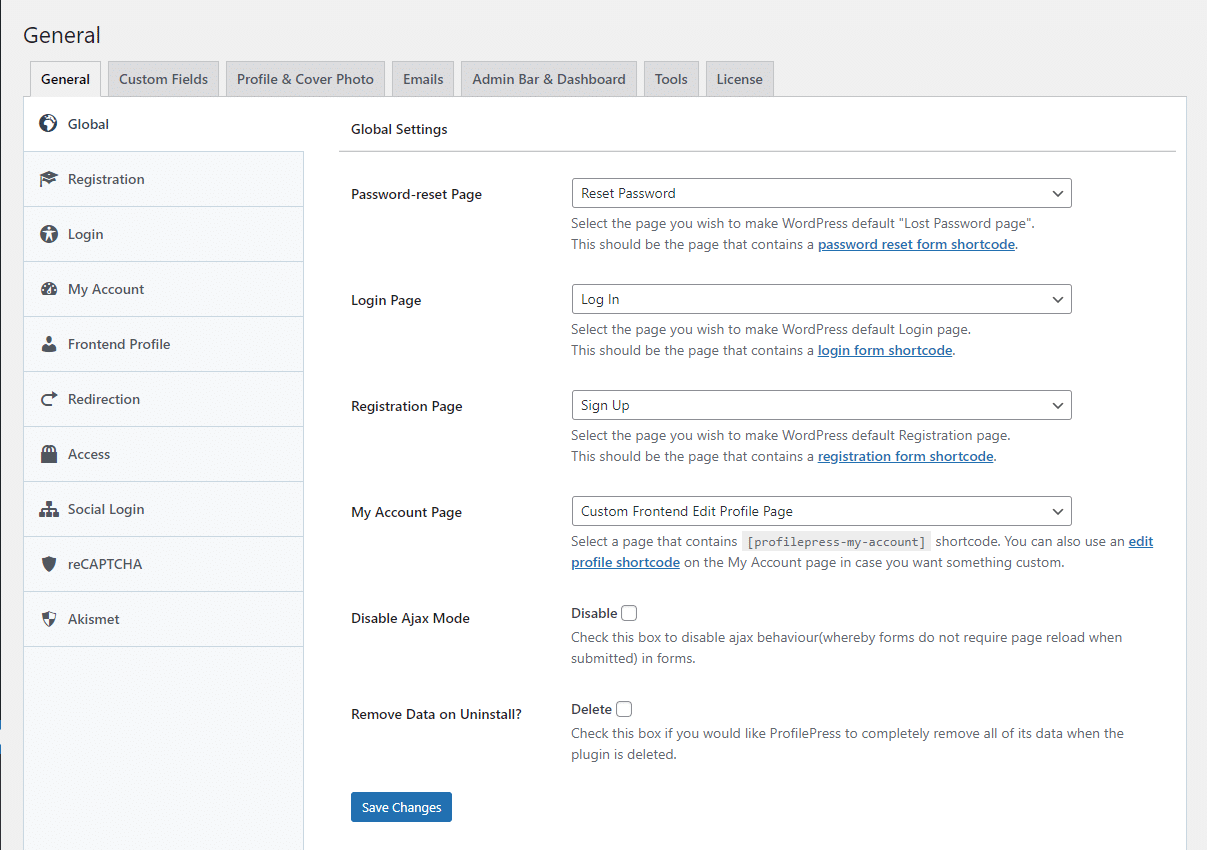
See also: WordPress User Redirections with ProfilePress.
2. Google’s reCAPTCHA
While traditional CAPTCHA systems present users with test questions that can sometimes reduce form conversion rates, Google has revolutionized this process with its No CAPTCHA reCAPTCHA. This innovative solution simplifies user interaction by replacing complex tests with a straightforward checkbox click, making it incredibly user-friendly.
The essential advantage of Google’s No CAPTCHA reCAPTCHA lies in its simplicity and effectiveness against spammers and bot attacks targeting online forms. By implementing this advanced technology, websites can significantly enhance security measures while providing a seamless user experience.

Our comprehensive guide walks you through adding reCAPTCHA to your custom registration forms. With step-by-step instructions, you can effortlessly fortify your website against spam registrations and ensure a smoother user registration process for your visitors.
An alternative to Google reCAPTCHA is Cloudflare Turnstile, which is privacy-focused and automatically verifies if a user is human without showing challenges like image puzzles. It uses browser behavior and device signals to make this determination, reducing friction for real users.
3. Akismet
Akismet is a formidable spam-fighting service that safeguards millions of WordPress sites against spam attacks on comments, contact forms, registration forms, and a broad spectrum of spam activities.
Our integration with Akismet’s anti-spam service is a robust defense for your registration form, providing a shield against spam and bot-driven registrations.
Unlike other methods, such as reCAPTCHA, Akismet provides an excellent user-friendly experience, as it operates without requiring any user action.
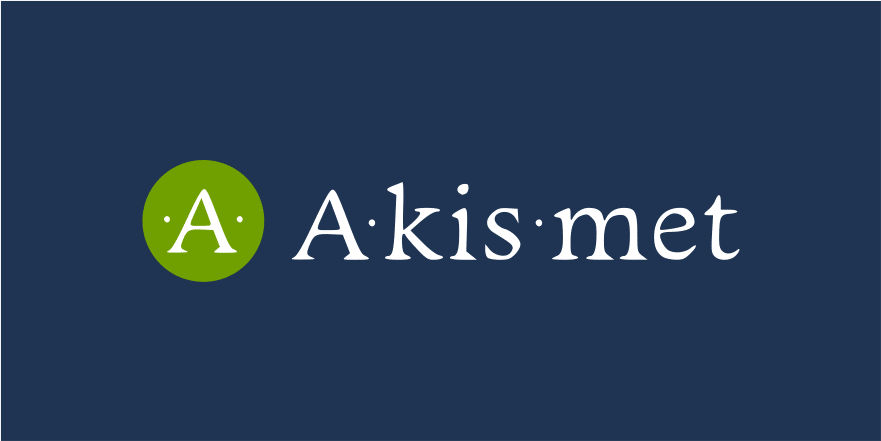
By leveraging Akismet’s advanced spam detection capabilities, your WordPress site gains a powerful ally in the ongoing battle against unwanted registrations.
4. Email Confirmation
Implementing user email confirmation or activation is potent in blocking spam registrations. This security measure mandates that all new users undergo a two-step verification process: first by registering and then by clicking on a confirmation link sent to their provided email address.
This additional step ensures that only legitimate users with valid email addresses can activate their accounts, significantly reducing the likelihood of spambots infiltrating your system.
When users register without confirming their email addresses, their accounts are automatically placed in a pending mode. This allows you, as the administrator, to have control over the activation process.
You can choose to manually verify their email addresses, ensuring that only authentic users gain access, or take action against potential spam by deleting unconfirmed accounts.
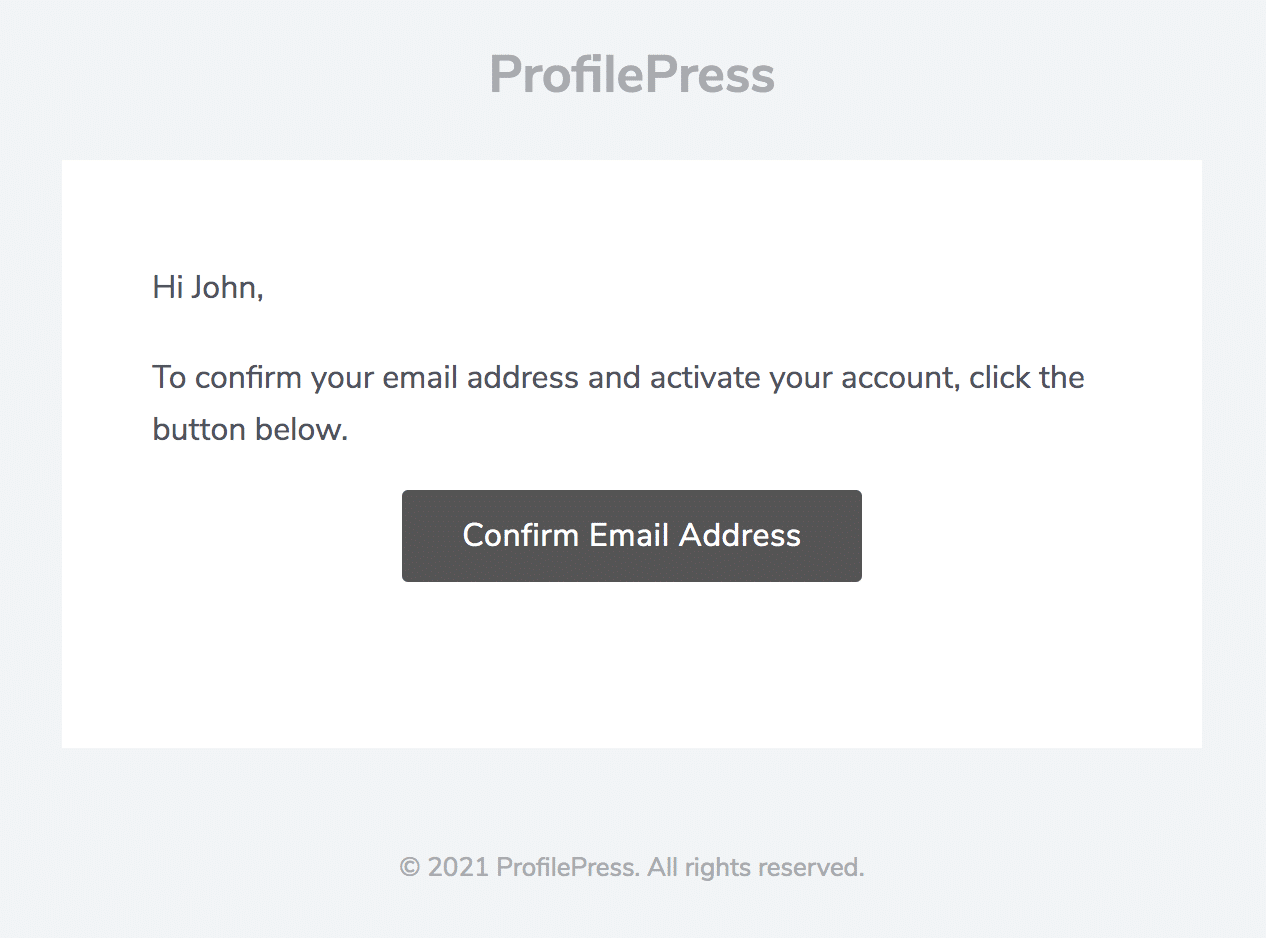
Users who haven’t confirmed their email address will be placed in pending mode. As an admin, you can manually email verify them or delete the spam users.
See also: WordPress Email Confirmation for Registered users.
5. Admin New User Approval
An additional and effective measure to prevent spam registrations is the implementation of manual approval of new users.
By enabling this feature, all newly registered users undergo a manual approval process, requiring your direct authorization as the administrator before they gain access to and use the website.
This added layer of scrutiny ensures that only legitimate users are granted entry, reducing the risk of spam infiltrating your platform. In cases where new registrations appear suspicious or spammy, you retain the authority to block or delete these accounts promptly.
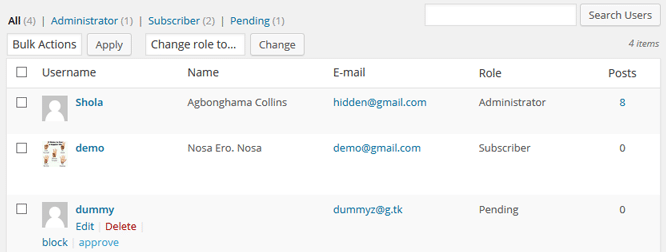
The process is streamlined through email notifications, as you receive an alert for each new user registration request. This notification keeps you informed and provides the convenience of taking immediate action.
From within the email, you can approve or block the accounts, enhancing the efficiency of managing user registrations and maintaining the integrity of your website’s user base.
Incorporating the Admin New User Approval feature not only bolsters the security of your WordPress site but also grants you greater control over the authenticity of users, contributing to a safer and more trustworthy online environment.
6. Two-Factor Authentication (2FA)
You can also prevent spam registrations in WordPress using Two-Factor Authentication (2FA).
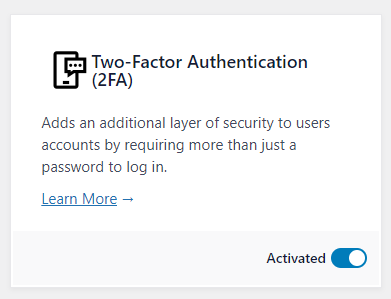
When activated, 2FA adds an extra step to verify your identity, going beyond just using a username and password. Users need to provide a second form of identification, typically a unique code sent to their phone or generated by an authenticator app.
By using 2FA, you not only prevent spam registrations but also enhance the security of your WordPress site.
We have a helpful guide that shows you how to set up Two-Factor Authentication (2FA) in WordPress.
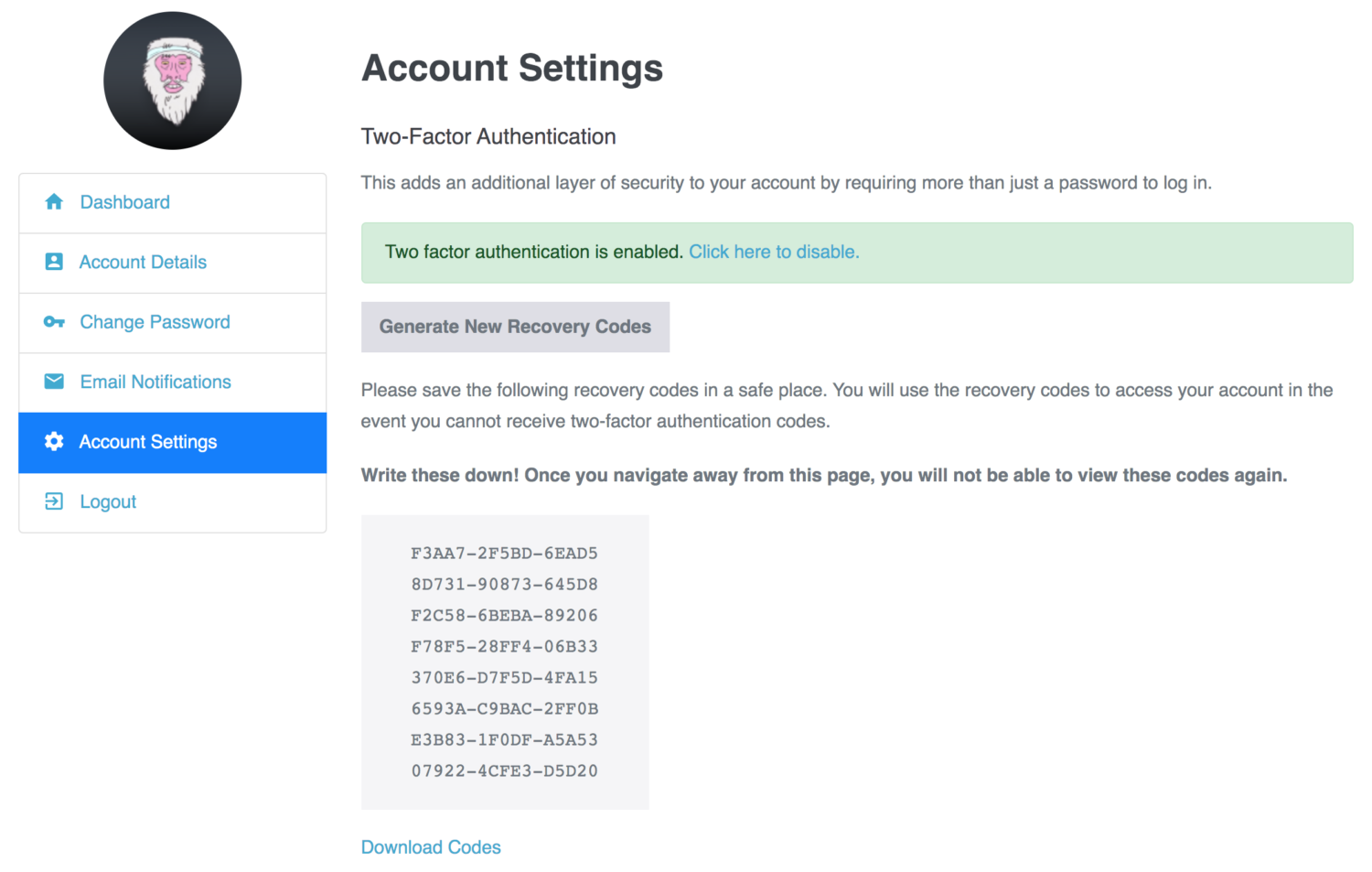
7. Blocking WordPress Registrations from Specific Email Domains
You can prevent spam registrations by blocking specific email domains. This feature allows you to filter out unwanted registrations from specific email providers or domains.
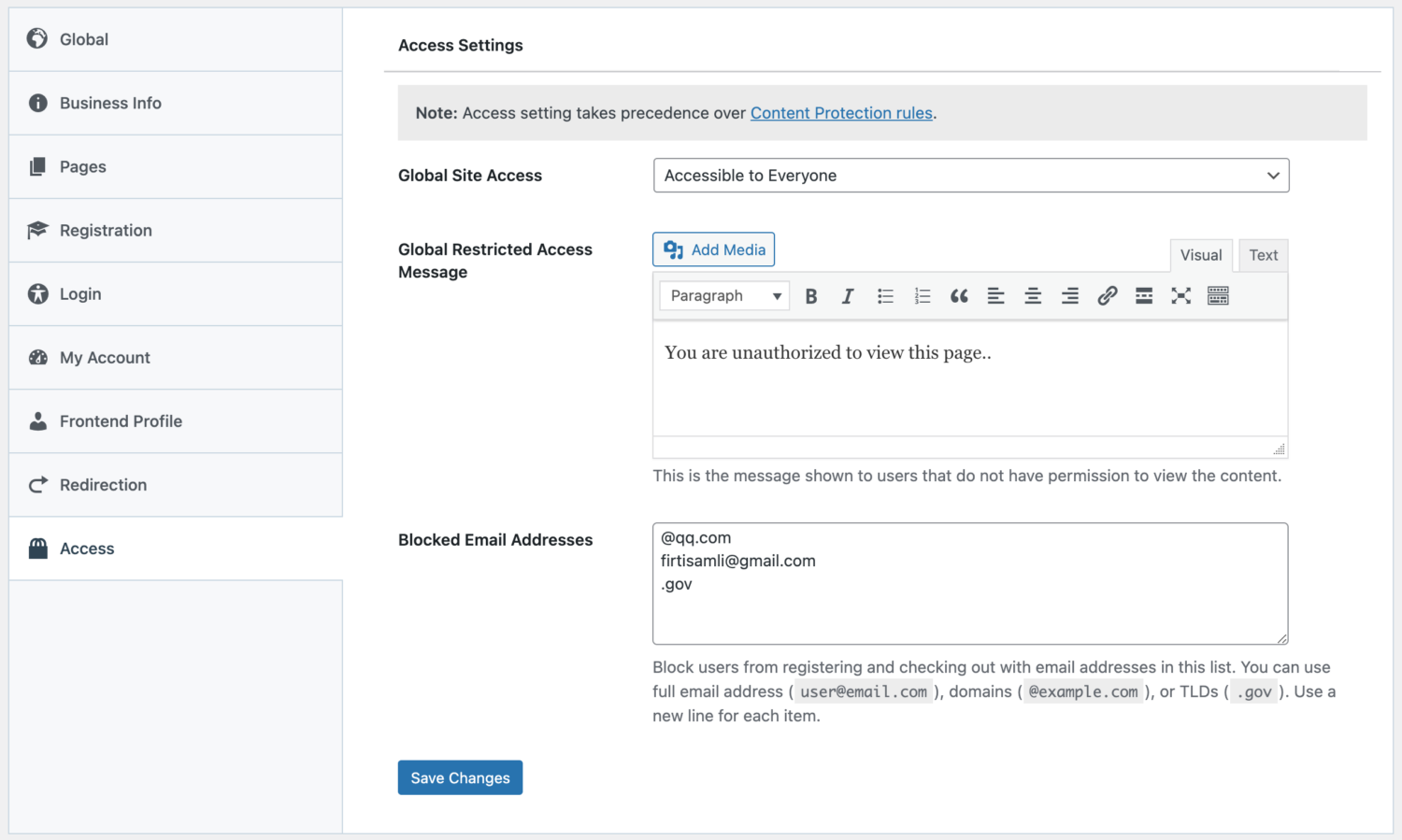
To illustrate, if you wish to block user registration attempts from Yahoo email addresses, simply input ‘@yahoo.com’ into the designated field. Similarly, to restrict registrations associated with government entities, such as those ending with a ‘.gov’ (TLD), enter ‘.gov’ in the provided box.
For specific email addresses, enter the full address. This level of customization ensures that you have the flexibility to tailor the registration restrictions according to your particular needs.
Preventing Spam User Registration in WordPress Today
Preventing spam user registrations is essential for maintaining website integrity and security. You can protect your site from potential threats by implementing measures to reduce unwanted registrations.
Let’s recap the diverse strategies at your disposal:
- Redirect the default WordPress registration page to a custom registration form.
- Leverage Google’s reCAPTCHA for an additional layer of security.
- Use Akismet.
- Implement email confirmation to ensure only users with verified email addresses can access your website.
- Granting administrative approval for new user registrations adds a manual review step, allowing you to filter out potential spam accounts.
- Manually approving new user registration.
- Blocking WordPress registrations from specific email domains
What are you waiting for? Get the most powerful WordPress registration form plugin today.
Related
Create Paid Membership Websites in Minutes
Install ProfilePress today and get a modern and powerful WordPress membership & ecommerce website – the easy way!
